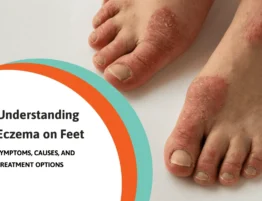
Ingrown nails are a very common (and usually very painful) condition for all ages of people. Approximately three million ingrown nails are treated annually in the US. This problem is especially common in children between the ages of 9 and 18, and the big toe is by far the most common nail affected.
-
Causes of ingrown nails:
There can be multiple reasons for this, including: improperly fitted shoes (toes get squished in the toe box), minor trauma, improper cutting, as well as genetic factors, such as the shape of the nail and surrounding skin. Also, some sports tend to contribute to the development of ingrown nails. For example, soccer players can be susceptible due to repeated kicking in tight fitting shoes. Ski boots can also irritate nails due to tight fit.
I recommend that all parents regularly check the fit of their children’s shoes and boots to see if the toes have adequate room, and make sure to replace any shoes that are getting too small. Children’s feet can grow rather quickly and even newer shoes may not fit properly for long.
-
Signs and symptoms:
Signs and symptoms of ingrown nails are pain and sensitivity to the nail and toe that may come and go. If an ingrown nail is getting infected it will usually look red and swollen and may even bleed or drain fluid. Home treatment for this issue are limited and not always very effective. Some common home remedies may even make the problem worse.
For example, you should never try to dig or cut out the nail border since the portion of the nail that is getting ingrown is deeper down in the toe than you think. Never try to place cotton under the nail. This is ineffective and may worsen the symptoms or infection. Don’t try and cut a notch in the nail, as this is also ineffective. There are a variety of over the counter remedies which at best don’t work and at worst may cause more severe infection.
One home remedy worth trying is soaking the foot in water and Epsom salts. This can help the nail drain and may give some improvement, however this will rarely fix the problem long term.
-
Solutions:
The best solution is to have the nail evaluated and treated by an experienced podiatrist. Ingrown nails can be treated quickly and safely in most podiatry offices. Treatment often involves numbing the toe and removing a small portion of the nail. If the nail has been ingrown more than once we will usually remove the nail corner and treat it with a chemical to prevent that sliver of the nail from growing back. This is a common and highly effective procedure with little pain or discomfort involved. I absolutely do not recommend that you ever dig at it, chop at it, or poke it with sharp objects. This will only make it worse.
So, if you think your child may have an ingrown nail, don’t wait until it gets infected or more painful. Make an appointment and nip it in the bud. The sooner it’s treated the sooner your child can get back to the fun stuff!










Write a comment: